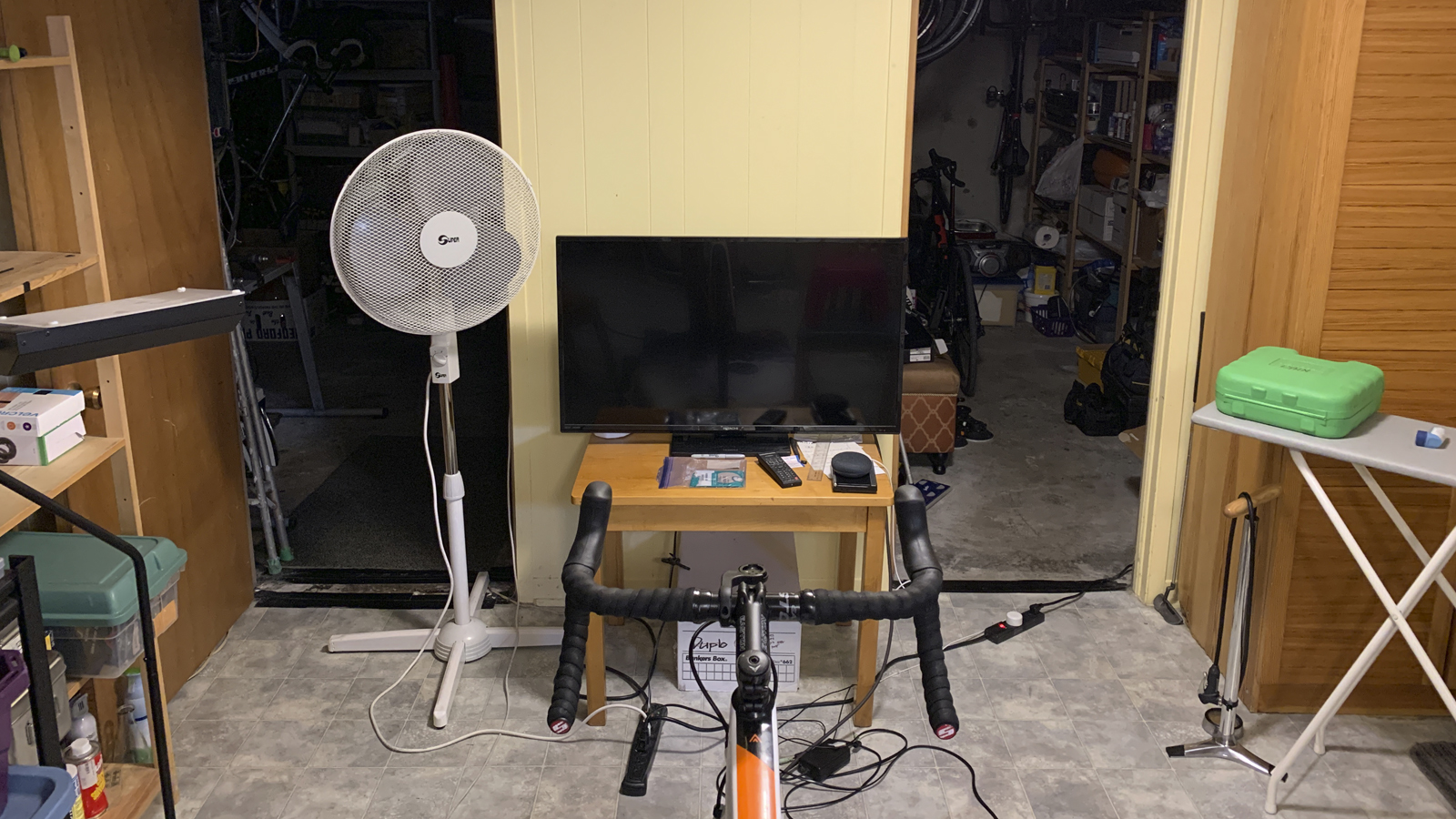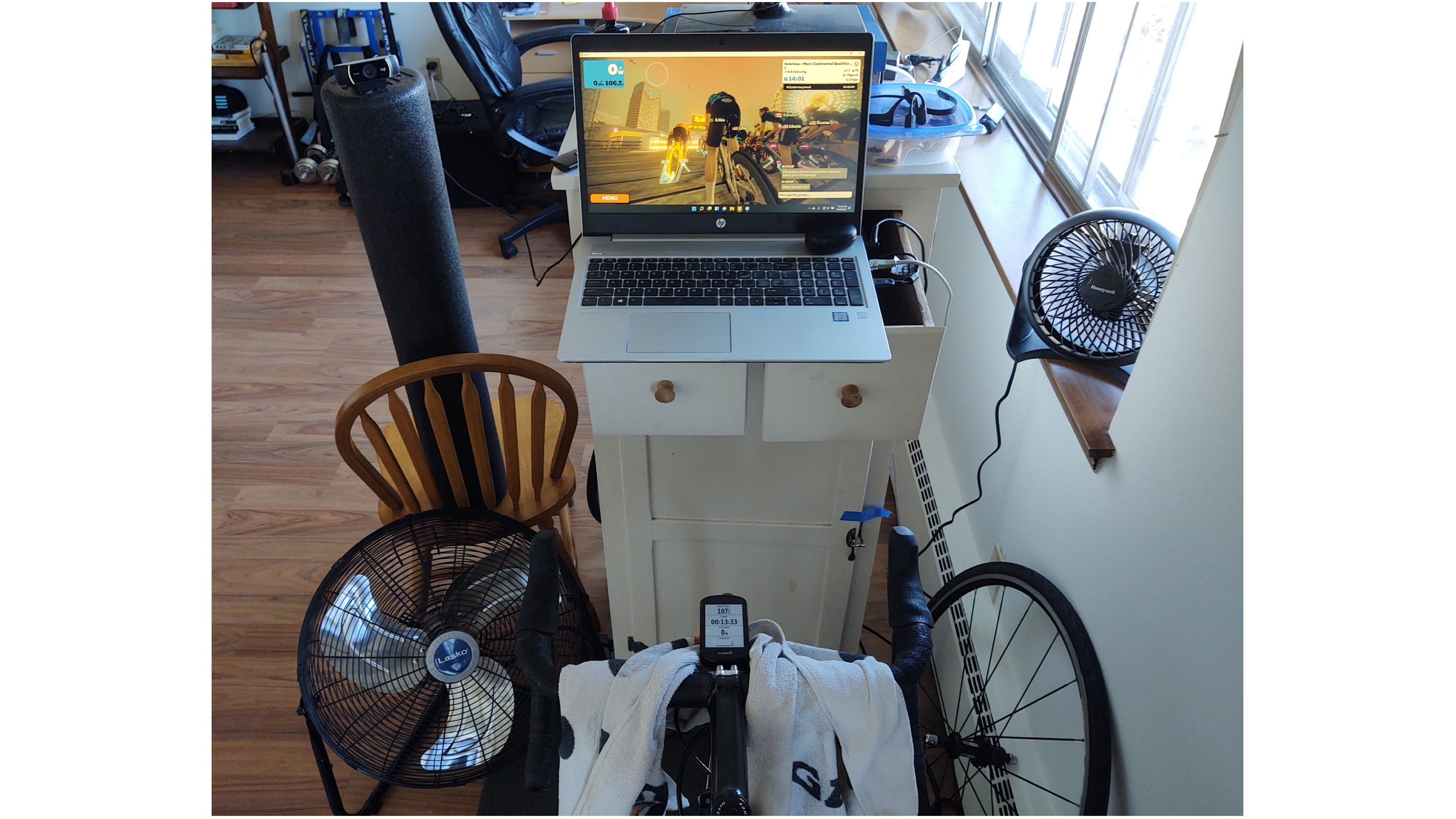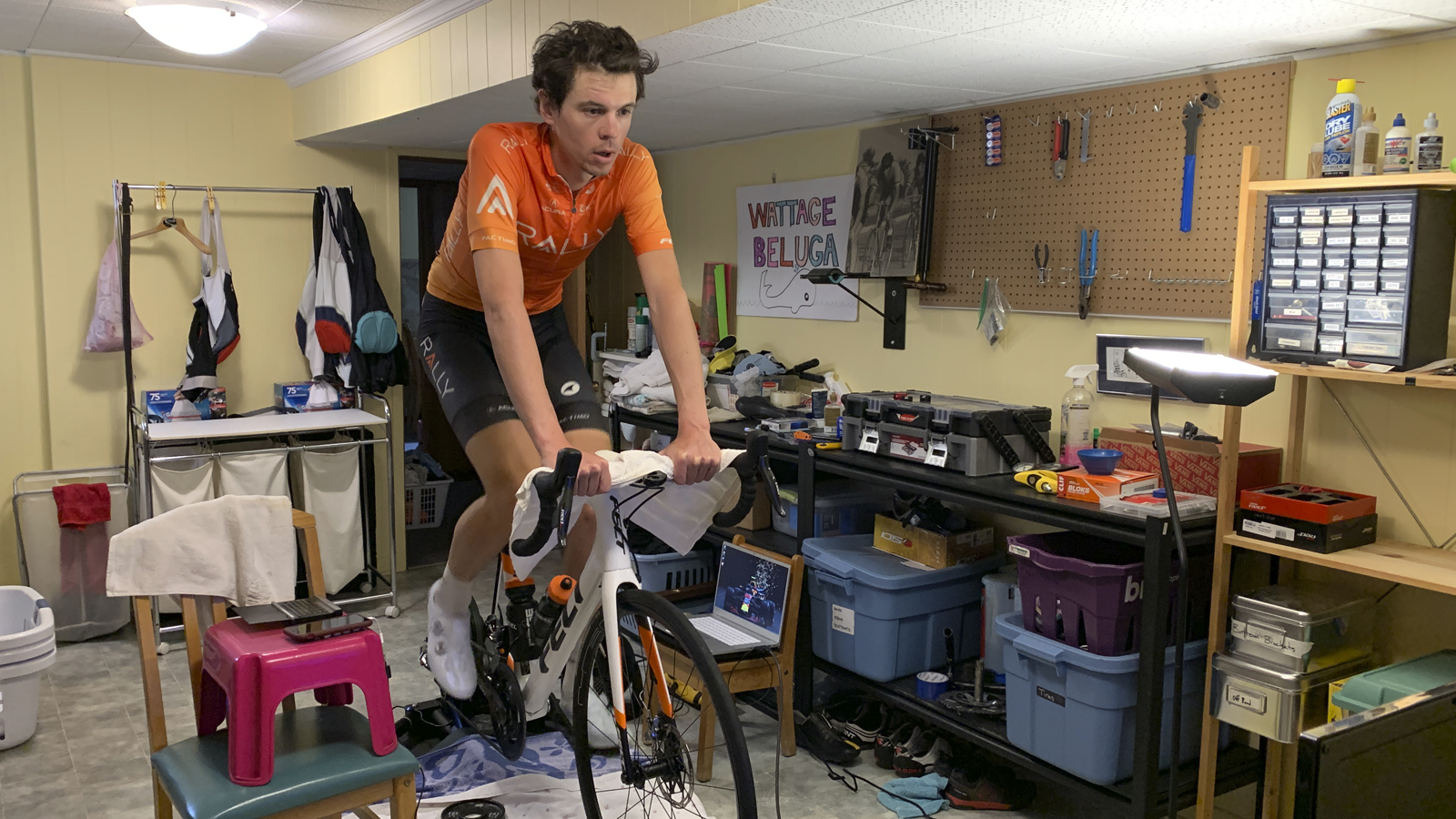How to build the perfect indoor training space
Explaining your indoor cycling set-up from beginner to expert level

Building an indoor cycling space can be a tall task. You’ll need enough space to accommodate your bike and trainer, as well as somewhere to put your smartphone, laptop, or tablet. There are purpose-made devices for all of your indoor cycling needs, and while they’re great to have, you don’t necessarily need all of them.
With the right tools and tricks, you can set up to ride anywhere from the guest bedroom, to the at-home office or dedicated pain cave. Wherever you are, you’re going to need the essentials, which we’ll dive into in a minute. After that, every accessory is a bonus, but some are more crucial than others. Riding without a fan, for example, is possible, but can be downright miserable. In this article, we'll show you how to build the perfect indoor training space, from the bare essentials to pro tips from indoor specialists.
Indoor training basics
At the bare minimum, you’re going to need a bike and a trainer to create your indoor training space. If you don't have these yet, we've got useful buying guides to the best bike for cycling indoors and the best turbo trainers to help you choose what to get. Technically, you don’t even have to be inside, but for all intents and purposes, we’re focusing on the typical indoor training space for this article.
To build the perfect indoor training area, you’re going to need to start with enough floor space to fit your trainer and bike put together. If you have a trainer platform or rocker plate, you’ll need to make room for that too.
Next, figure out where the wall outlets are and where you can plug-in each of your devices. Indoor cycling apps can rapidly drain your batteries, so plug in whatever device(s) you’re running, whether it’s a TV, smartphone, or one of the best computers and tablets for indoor cycling.
Make sure that floor is level, or at least close to level, before you fully integrate your trainer with the space. Many trainers have adjustable feet that you can use to level your trainer on slightly uneven surfaces, because the last thing you want to feel mid-sprint is your trainer slowly beginning to tip over.
Regarding the space itself, these are only the basics that you need to get started, so now let’s take it up a notch.
Get The Leadout Newsletter
The latest race content, interviews, features, reviews and expert buying guides, direct to your inbox!

Essentials for your indoor training space
A fan – or multiple – should be an integral part of your indoor training space. While they aren’t necessary by definition, fans are needed for enjoyable indoor riding and peak performance. Without a fan or any type of external cooling, you’ll overheat in minutes on the trainer.
For the ultimate indoor training setup, use multiple fans pointed at different sides or parts of your body. The ideal setup – if you have the space – is having two fans in front of you and slightly off to your side, one for your left and one for your right. Having another fan blowing on your face or core will also help keep your body temperature stable, even during a max effort.
Speaking of overheating, it is best to put some sort of trainer mat or absorbent material under your trainer setup. Some turbo trainer manufacturers sell their own specific trainer mats, but you can really use any kind of mat made of rubber or PVC. These materials will absorb or deflect sweat, while also protecting whatever floor you have beneath it.
Towels are a huge help too. Of course, you are free to sweat onto your handlebars and through your bar tape, but the combination of sweat and salt can damage cables and components, in addition to being generally gross.
A front wheel block is great to have as it will level your bike and stabilise your front wheel. Brand name blocks are relatively cheap, but you can also use any kind of book or wooden block to simply elevate your front wheel as high as the rear wheel.
One of the items that I debated putting in the “essentials” category was food and hydration. If you’re riding for less than an hour, then food won’t be necessary, but hydration will always be. For longer rides, you should start with two water bottles and have another 1-2 nearby unless you have a partner who can give you a mid-race hand-up.
Entertainment is another factor of indoor training that is often overlooked. Some days are fun, but for others it is a slow, monotonous grind of each pedal stroke. To keep your mind from descending into darkness, give yourself a few different entertainment options while you ride. Personally, I run my indoor training apps on a laptop with a small TV setup just above it. That way I can watch movies, listen to music, or stream videos while riding, or turn it all off and just focus on the app. Having options is nice when you have nowhere to go.
Our final mid-level tip is to get a desk or surface where you can put your devices while you ride. This covers everything from phones and water bottles, to remotes, chargers, head units, and course recon data sheets. Having them all in a space that is each to reach is crucial for comfortable and stress-free riding.

Pro tips
Now we’re getting into the good stuff. These are the tips and tricks that take years to learn, and a few brave souls to try.
I’m not sure sweatbands are – or were ever – in style, but they are certainly functional on the indoor trainer. A sweatband to wrap around your forehead will help keep sweat out of your eyes, even during your hardest efforts.
You can also wear glasses to shield from the whirring fans and blue light-emitting screens. Most cyclists wear glasses on the road to protect their eyes from the wind, so why should it be any different on the trainer? If you have a fan blasting air into your face, your eyes could quickly become dry and painful after just a few minutes. Blue light-blocking glasses will also help protect your eyes from screens; especially if you train outside daylight hours, this can help you maintain a healthy sleep cycle.
Some indoor riders even wear special cooling packs on their neck or down the back of their jersey. Remember that weight and aerodynamics don’t really matter on the indoor trainer, so adding these accessories does nothing to your in-game avatar. Even putting a simple ice pack down the backside of your jersey can help keep you cool during indoor workouts or races.
I cannot stress enough how a good set of wireless headphones is a game-changer, so it's definitely worth taking a look at the best headphones for cycling. Without cables, you’ll be free to move your hands, sit up, get in or out of the saddle, and switch devices without much of a bother. Wireless headphones are also great for chatting with your friends or virtual teammates in the heat of a race. Their typical sound quality is better than most wired headphones, and much less affected by surrounding noises such as your trainer, shifting, or the fans.
For the dedicated racers, streamers, and tech enthusiasts, make sure that you have strong Internet and wireless connection in your training space. You can reposition your router, get a range extender, or use an Ethernet cable to improve your connection, both of which make a huge difference for the quality of your app, streaming, and ride.

Conclusion
After the bike and trainer, there is a huge range of accessories and necessaries to help you get the most out of your indoor training. Fans and towels are almost a must, while cold packs and glasses are on the higher end.
Depending on your dedication to indoor training, some of the items on this list may change your life. Personally, I’ve found that a good sweatband and powerful fans were the biggest improvements to my indoor training experience. Most of these products cost less than £20, which means that you don’t have to spend a fortune to build your perfect indoor training space.
Zach is a freelance writer, the head of ZNehr Coaching, and an elite-level rider in road, track, and e-racing. He writes about everything cycling-related, from buyer's guides to product reviews and feature articles to power analyses. After earning a Bachelor’s Degree in Exercise Science at Marian University-Indianapolis, Zach discovered a passion for writing that soon turned into a full-fledged career. In between articles, Zach spends his time working with endurance athletes of all abilities and ages at ZNehr Coaching. After entering the sport at age 17, Zach went on to have a wonderful road racing career that included winning the 2017 Collegiate National Time Trial Championships and a 9th place finish at the 2019 US Pro National Time Trial Championships. Nowadays, Zach spends most of his ride time indoors with NeXT eSport.
